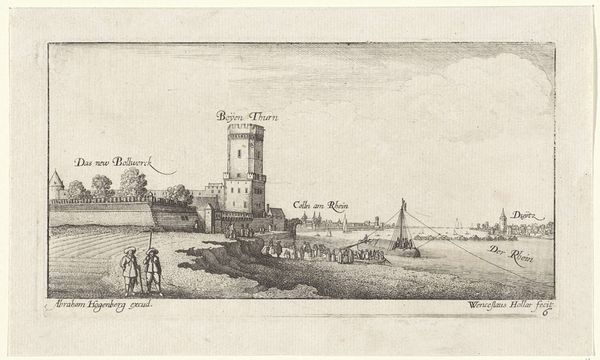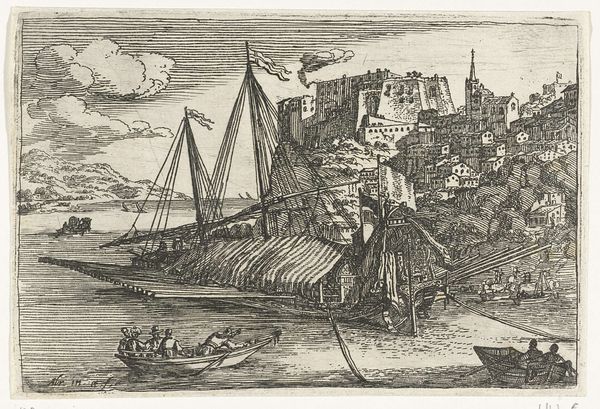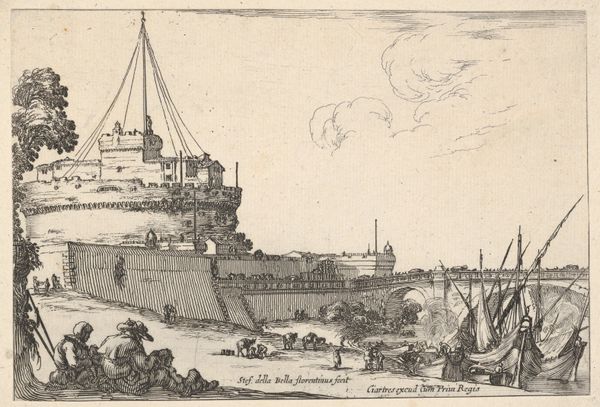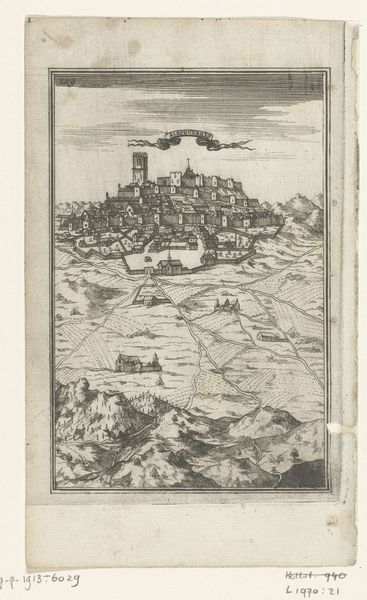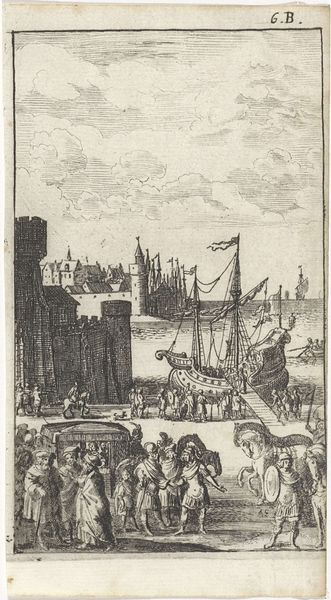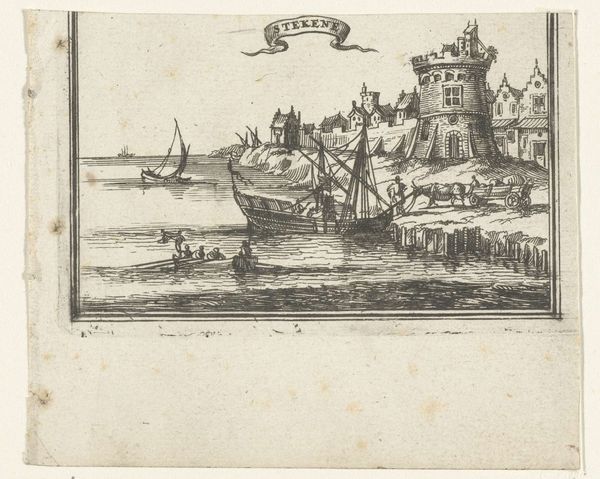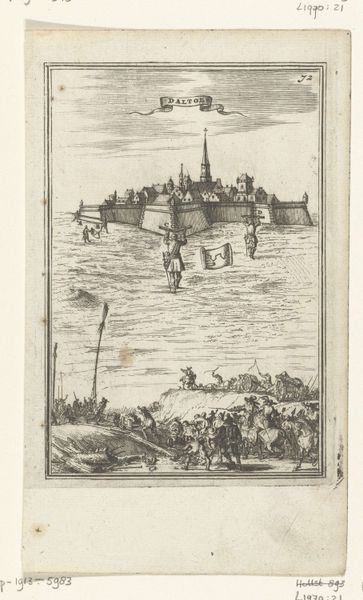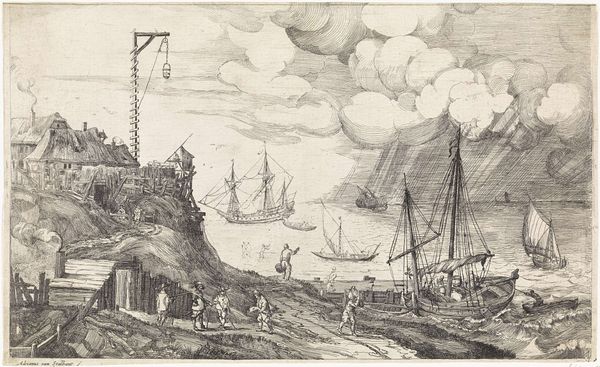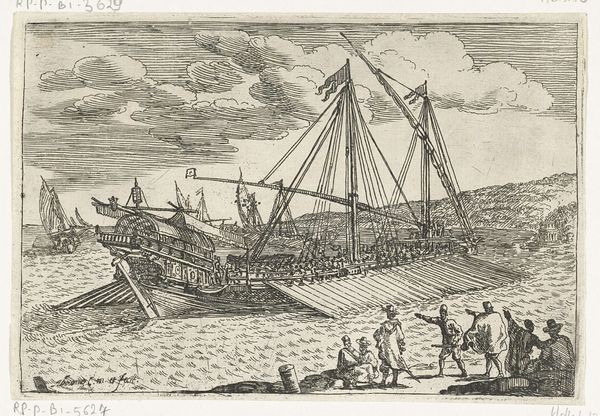
print, engraving
# print
#
11_renaissance
#
cityscape
#
history-painting
#
italian-renaissance
#
engraving
Dimensions: height 215 mm, width 152 mm
Copyright: Rijks Museum: Open Domain
Editor: So, this is “Engelenburcht en de Engelenbrug,” or Castel Sant'Angelo and the Bridge of Angels, by Giovanni Maggi, dating from somewhere between 1576 and 1618. It's a print – an engraving, to be exact – and seeing the building, the bridge, and the figures gives it almost a stage-like quality. What do you see in this piece, especially given its Renaissance origins? Curator: I note the precise linearity of the engraving technique. The clear, deliberate lines delineate form, emphasizing the architecture. Look at how Maggi utilizes the formal qualities of line and shape to articulate depth, particularly in rendering the Castel Sant'Angelo. Editor: So, it's less about representing it naturally, and more about a technical representation? Curator: Precisely. We see how the composition divides into distinct horizontal planes, each defined by varying densities of line. This emphasizes the separation of foreground, middle ground and background, contributing to a structured reading of the cityscape. Note how he does not dissolve edges into shadow, but constructs form through strategic arrangements of hatching and cross-hatching. Editor: It’s interesting how much information he gets across, just using line! Curator: Indeed. It showcases the formal characteristics prized during the Renaissance—clarity, order, and rational organization of space through a calculated display of form. This approach aligns the piece more with an intellectual exercise, rather than mere mimetic reproduction. We discern through this calculated construction, Maggi's engagement with established Renaissance pictorial conventions. Editor: I didn’t see it that way at first, but analyzing its structure highlights its connection to Renaissance artistic philosophy. Thanks!
Comments
No comments
Be the first to comment and join the conversation on the ultimate creative platform.
